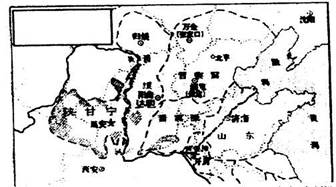问题
选择题
某同学在研究性学习成果汇报展中,呈现了如下一幅地图。根据图中提供的信息,其研究成果的主题围绕着( )

A.国民革命运动的成就
B.工农武装割据局面的形成
C.中 * * 党的敌后抗日
D.解放区的发展和扩大
答案
C
题中所给各根据地的主要区域是在黄河流域。1934年,中央苏区第五次反围剿失败后,被迫进行战略转移,1936年10月,长征胜利完成。抗日战争时期,我党在华北地区、黄河流域建立了大大小小的敌后抗日根据地。陕甘宁边区成为敌后抗日根据地的指挥中枢和总后方。
